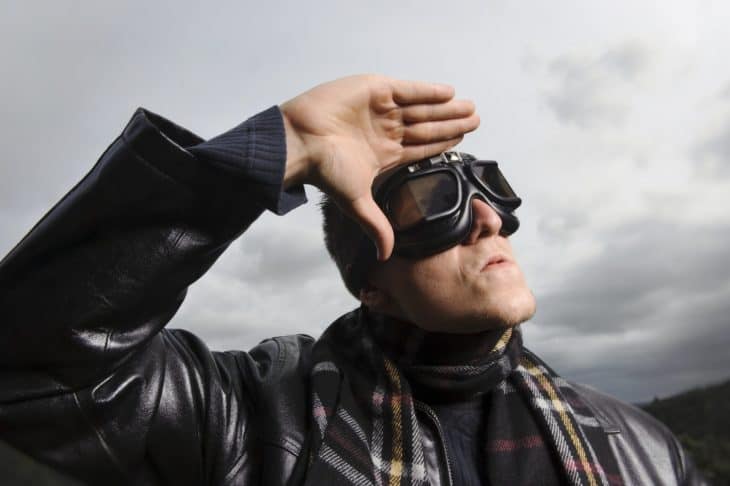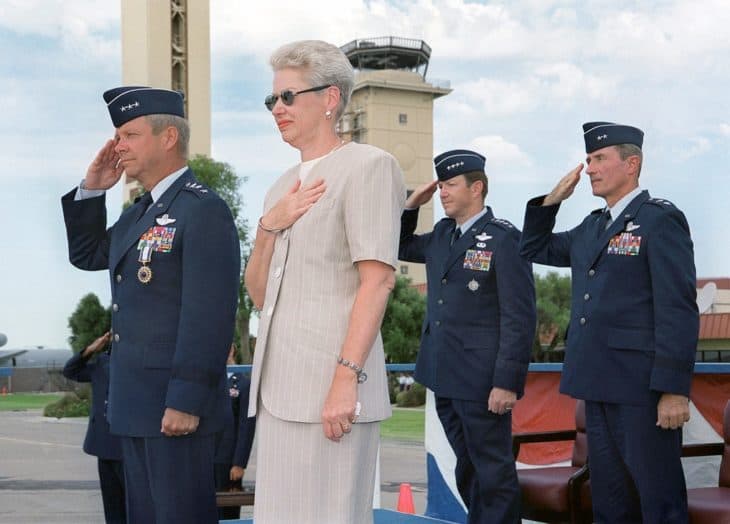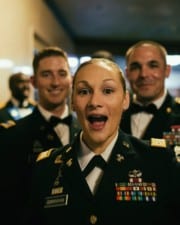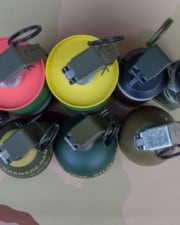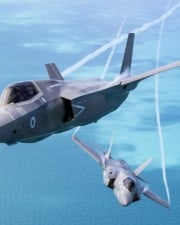When the American flag or a soldier passes by, civilians may be tempted to give a salute. Many people assume that a salute is considered a gesture of respect. However, there is specific etiquette when it comes to rendering a salute, whether you are a veteran, active service member, or civilian.
TLDR – Civilians should face the flag and place their right hand over their heart during the National Anthem. Saluting the flag is a gesture reserved for the military. While civilians can salute soldiers, many veterans consider it inappropriate or awkward.
Can Civilians Salute Soldiers?
Saluting soldiers is not a recommended way to honor current or former members of the Armed Forces. Even members of the Armed Forces do not salute when out of uniform. A salute is part of the official protocols that active soldiers follow. Outside official duties, the military salute is rarely displayed.
While veterans and active service members may find it cute when a toddler salutes, a salute from an adult civilian may lead to awkwardness. Instead of saluting, most soldiers would agree that civilians should simply wave or say, “thank you for your service.”
Can Civilians Salute the Flag?
Civilians should not salute the American Flag with a military salute. The military salute is considered a privilege earned by those who have served in the Armed Forces and is reserved for official protocols.
Civilians should follow specific etiquette during the National Anthem. The right hand should be placed over the heart. Men and women should remove hats. However, women may wear headwear, such as scarves.
When wearing a hat, it is acceptable for men to hold their hat in the right hand and place it in front of the left shoulder. With the hat at the left shoulder, the right hand should be above the heart.
Men and women should also face the flag and stand at attention until the National Anthem is finished. The same etiquette is followed when the Pledge of Allegiance is spoken.
Traditionally, only uniformed soldiers could salute the US flag during the National Anthem or when raising or lowering the flag. In 2008, the US Congress approved legislation to allow veterans and members of the military who are not in uniform to salute the flag.
When in military uniform, military members are required to salute the flag during the Pledge of Allegiance and National Anthem. Soldiers should also salute when the flag is raised or lowered.
If the flag is passing, such as during a parade, the soldier salutes the flag when it is six paces away and holds the salute until the flag has passed an additional six paces.
Members of the military and veterans who are not in uniform may render the salute or follow the same etiquette required of civilians.
Can the President Salute the Flag and Soldiers?
Throughout most of the history of the United States, the US President does not salute soldiers or the American flag. As with civilians, the president typically holds his hand over his heart to show respect for the flag. However, as the commander-in-chief, the president also has the right to give a military salute.
In the past several decades, it has become custom for US Presidents to salute military personnel, such as when boarding and exiting Air Force One or Marine One. This started in the 1980s during Ronald Reagan’s presidency.
Members of Marine One are required to salute the president as he approaches the helicopter and when he exits. As with previous presidents, Ronald Reagan would nod and say hello to the Marines, but he found it awkward that the Marines could not drop their hands. They had to hold their salute as he passed.
Ronald Reagan decided to return the salute so that the Marines could stand at ease. However, this goes against existing protocols for rendering the salute.
According to Federal regulations, individuals can only render the salute when in uniform and hat. Before 2008, veterans and active service members in civilian clothes were also prohibited from giving a salute.
As Ronald Reagan was wearing civilian clothing, his salute would violate US regulations. Before violating the regulations, Reagan sought counsel from the commandant of Marine One. He told Reagan that as president no one would stop him from giving the salute.
Ronald Reagan soon began saluting the military personnel whenever entering or exiting Marine One or Air Force One. Each of the presidents that came after has followed Reagan’s example. George H.W. Bush, Bill Clinton, George W. Bush, Barack Obama, and Donald Trump all render the salute.
When Do Soldiers Salute?
Members of the Armed Forces follow strict guidelines for rendering the salute. They typically only render the salute while in uniform unless they are saluting the American flag.
Enlisted personnel in uniform are required to render the military salute in the presence of commissioned officers, warrant officers, and authorized civilians, such as the US President. However, the salute is only rendered indoors when reporting to an officer.
For example, when a low-ranking soldier approaches an officer outdoors, the soldier renders the salute as a sign of respect and recognition of the personal commitment to the United States. The soldier maintains the salute until the officer returns the salute.
If the same interaction occurs indoors, the soldier does not salute, unless they are reporting directly to the officer. Instead of saluting, the soldier stands at attention.
Soldiers are also required to render the salute on ceremonial occasions, such as funerals, changes of command, and when the National Anthem plays.
How Do You Give a Military Salute?
Soldiers are required to perfect the military salute, as a sloppy salute is considered disrespectful. A proper salute involves raising the right hand with the fingers and thumb extended and joined together with the palm down.
The soldier moves the right hand sharply, positioning the tip of the right forefinger slightly to the right of the right eye. The hand should be positioned at an angle so that the top and bottom are not visible from the front.
A proper salute also requires the soldier to keep their hand and wrist straight, with the elbow slightly forward and the upper arm in a horizontal position.
Related Posts
